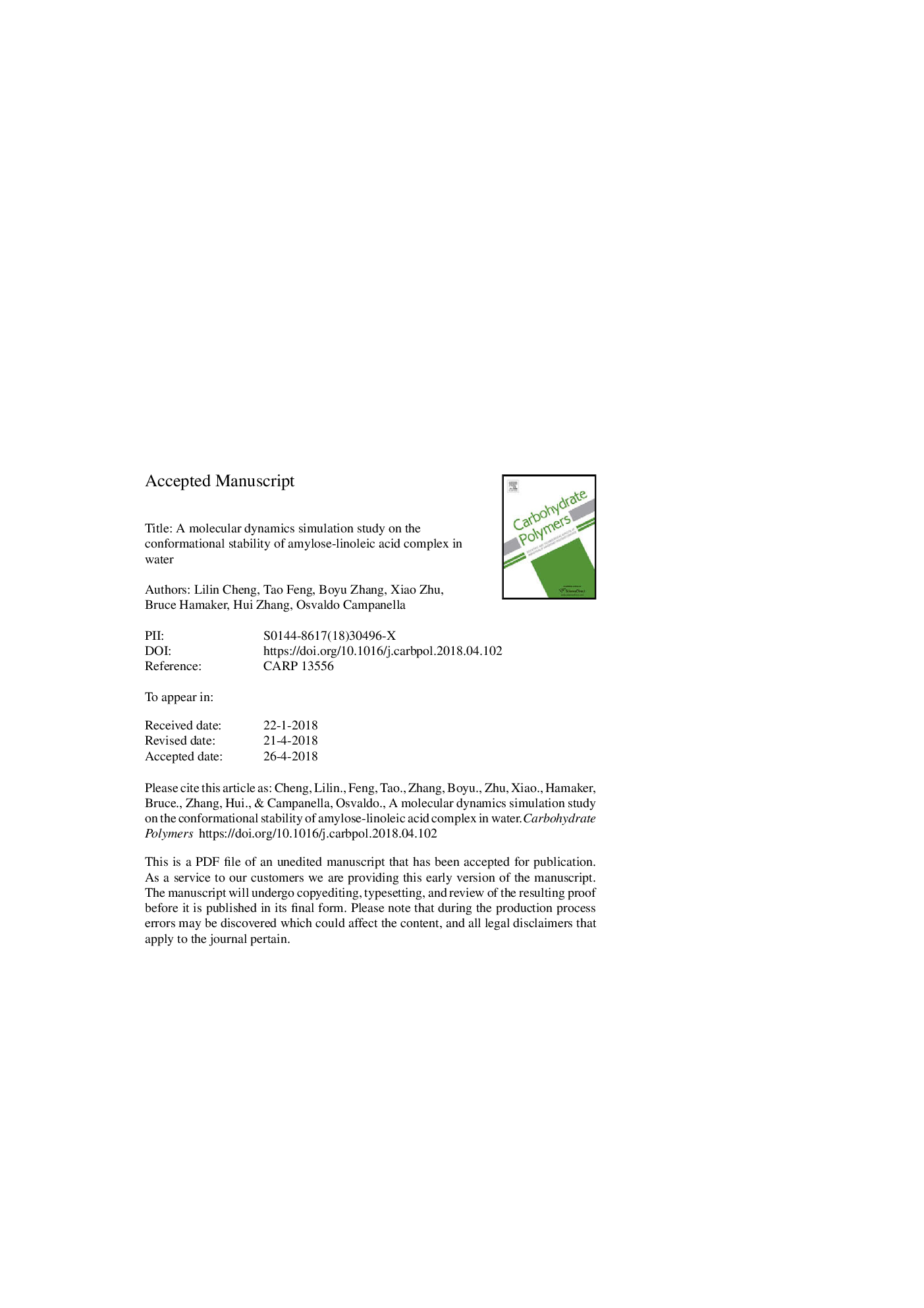| Article ID | Journal | Published Year | Pages | File Type |
|---|---|---|---|---|
| 7781645 | Carbohydrate Polymers | 2018 | 21 Pages |
Abstract
Amylose is a linear polymer formed by α-1,4 linkages and one of the major components of starch. It is often used to encapsulate hydrophobic molecules of health benefit, such as fatty acids (FA), flavonoids or polyphenols. Amylose and linoleic acid form a complex when the amylose molecule is folded in a V-type conformation. However, it is still not clear how amylose and linoleic acid interact with each other and what is the conformation of the complex adopts under different conditions. Molecular dynamics (MD) simulation is a useful tool used to describe the structure of molecules and complex systems. In this work, MD simulations were used to illustrate conformational changes of the amylose-FA complex and the single amylose molecule, which was used as a reference, in water. During simulations, the conformation of the complex remained stable and the linoleic acid and the amylose molecules formed a helical structure. Furthermore, fatty acid molecules were located in cavity of the amylose helix with the hydrophobic tail inside it. Results also showed that 4C1 was the predominant ring conformation of glucose unit in amylose during interaction with fatty acids. Once the fatty acid was able to form the complex with amylose, the inter turn hydrogen bonds between O6 and neighboring O2/O3 groups were preferentially retained and allowed the complex to keep its helix conformation. Our analysis also shows that the amylose-linoleic acid complex is slightly less stable than the one formed between stearic acid and amylose.
Related Topics
Physical Sciences and Engineering
Chemistry
Organic Chemistry
Authors
Lilin Cheng, Tao Feng, Boyu Zhang, Xiao Zhu, Bruce Hamaker, Hui Zhang, Osvaldo Campanella,
